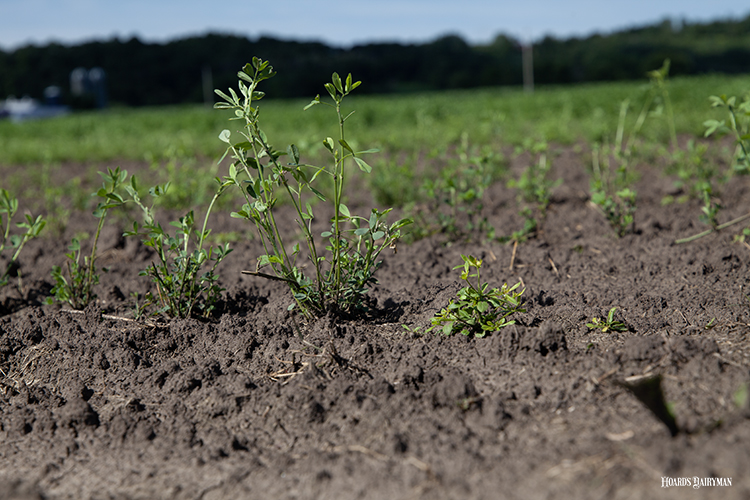
Mild moisture stress early in the season is often not extremely detrimental to corn when subsurface moisture has been adequate, but what about other crops? In the short term, there is not too much to worry about with soybeans or even alfalfa just yet, either, though it may be wise to keep an eye on hay markets if dry conditions persist through more of the summer.
“Soybeans can suffer through some relatively dry conditions up to R1 or even past that,” said Shawn Conley, state soybean specialist with University of Wisconsin-Madison, in a Badger Crop Connect webinar. If they were planted appropriately and the taproot is established, he said the plant will be fine in the early season dry conditions that Wisconsin and other parts of the Midwest and country have seen so far this year.
If seeds were being planted into drier soil, Conley said a deeper furrow is needed to make sure the seed makes contact with subsurface moisture. In Wisconsin, soil moisture has been adequate even as rainfall has been lacking because of a very wet winter.
The real concern for moisture is when soybeans need the most water — that’s from about the R4 stage on. Conley described that in the Badger State, the most rain is needed from about August 7 to September 7 for the beans to put on seed.
Know your forage needs
On the alfalfa side, Marta Kohmann reminded that the plant is not necessarily drought resistant, but it can withstand a fair amount of limitation. The forage extension specialist described that when challenged, alfalfa plant growth will slow, possibly creating shorter plants with smaller leaves. In established plants, it will also speed up the maturity process, resulting in lower forage quality.
Rains are generally expected to normalize toward the end of the month in much of the Corn Belt, so those alfalfa stands will be expected to recover, Kohmann said. If you have enough regrowth since the last harvest and choose to harvest again in the short term, she advised testing forage quality beforehand.
However, if dry conditions remain and more of a drought develops, start considering how much forage you have stored, she reminded. As of early June, one-quarter of alfalfa hay acreage in the U.S. was already experiencing a drought, so availability may be stretched and prices may rise. Again, Kohmann recommended testing forage quality in any purchased hay.
Explore alternative forage options with your local nutrition team and keep an eye on the hay markets. For the Upper Midwest, that information can be found here. If you are grazing pastures and growth becomes stunted, she described that you may look into reducing stocking rate by utilizing more space or carrying fewer animals.
Adequate soil moisture is helping plants remain healthy so far this season, and a clearer picture of what the rest of the summer and fall holds will come into focus in the next few weeks. Replenishing rains will be welcome and needed for much of the country.








